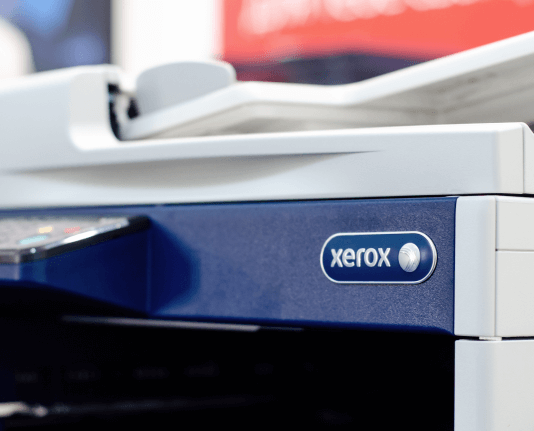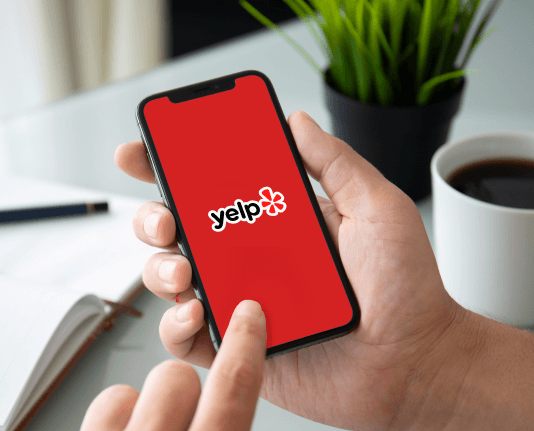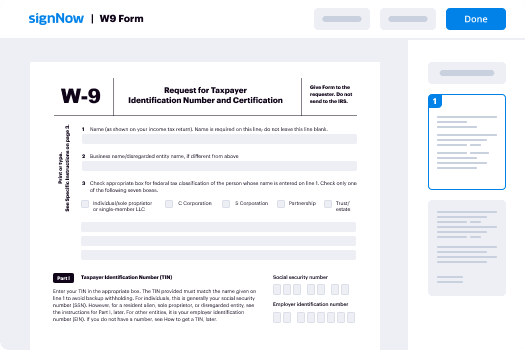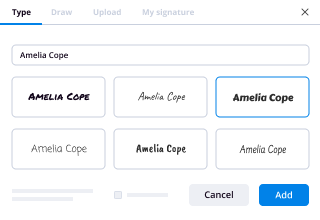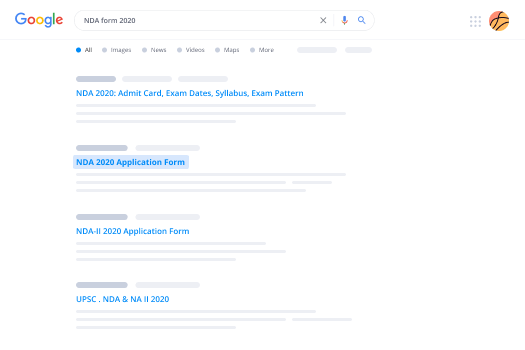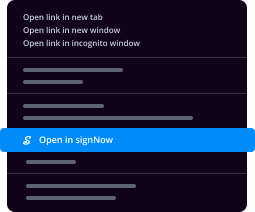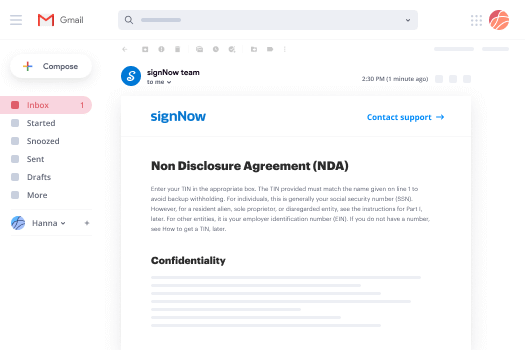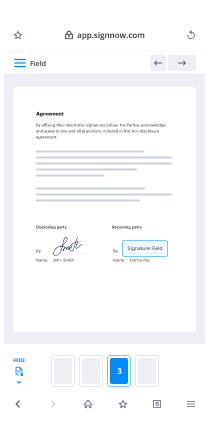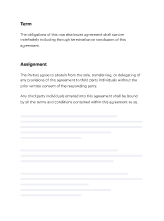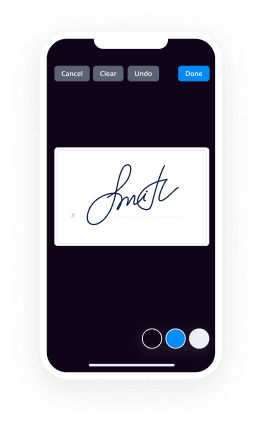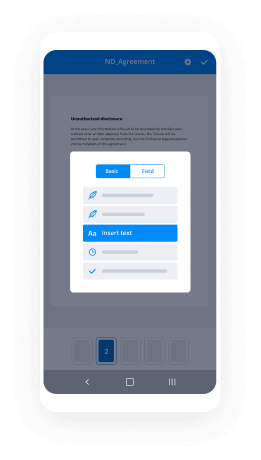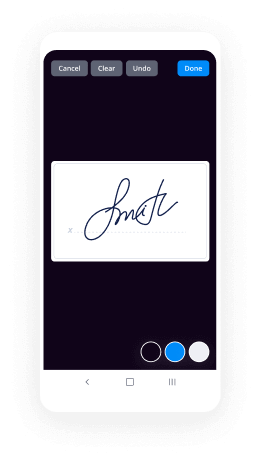eSign PDF for Procurement Mobile
Make the most out of your eSignature workflows with airSlate SignNow
Extensive suite of eSignature tools
Robust integration and API capabilities
Advanced security and compliance
Various collaboration tools
Enjoyable and stress-free signing experience
Extensive support
Keep your eSignature workflows on track
Our user reviews speak for themselves






Advantages of mobile procurement solutions like airSlate SignNow
Mobile procurement solutions are transforming the way organizations handle their signing procedures. With airSlate SignNow, businesses can optimize document workflows, improve teamwork, and increase efficiency by utilizing its powerful capabilities and intuitive interface. This guide will take you through the steps to effectively use airSlate SignNow for your signing requirements.
Utilizing mobile procurement solutions: airSlate SignNow
- Open your web browser and go to the airSlate SignNow home page.
- Set up a free trial account or log into your current account.
- Choose the document you want to upload for signatures or send it for signing.
- If you intend to use the document multiple times, transform it into a reusable template.
- Access your document to make essential modifications, such as adding fillable fields or other necessary details.
- Sign the document and specify signature fields for any recipients.
- Click 'Continue' to set up and send your electronic signature request.
Integrating airSlate SignNow into your document management workflow can greatly improve efficiency and decrease the time spent on paperwork. With its extensive feature array and budget-friendly pricing, it provides a solid return on investment.
Don’t hesitate to streamline your signing procedure—initiate your free trial of airSlate SignNow today and discover the advantages of sophisticated mobile procurement solutions for your organization!
How it works
Rate your experience
-
Best ROI. Our customers achieve an average 7x ROI within the first six months.
-
Scales with your use cases. From SMBs to mid-market, airSlate SignNow delivers results for businesses of all sizes.
-
Intuitive UI and API. Sign and send documents from your apps in minutes.
A smarter way to work: —how to industry sign banking integrate
FAQs
-
What are mobile procurement tools and how can they benefit my business?
Mobile procurement tools enable businesses to manage purchasing processes on-the-go, allowing for greater flexibility and efficiency. By using these tools, companies can streamline their procurement workflows, reduce paperwork, and enhance collaboration among team members, ultimately leading to cost savings and quicker decision-making.
-
How does airSlate SignNow function as a mobile procurement tool?
airSlate SignNow serves as a powerful mobile procurement tool by allowing users to create, send, and eSign procurement documents from any mobile device. Its user-friendly interface ensures that procurement professionals can manage contracts and approvals efficiently, without being tied to a desk, enhancing productivity and responsiveness.
-
Is airSlate SignNow affordable compared to other mobile procurement tools?
Yes, airSlate SignNow is considered a cost-effective solution among mobile procurement tools. With various pricing plans tailored to different business needs, users can choose a subscription that fits their budget while still accessing robust features that enhance procurement efficiency.
-
What features make airSlate SignNow stand out as a mobile procurement tool?
Key features of airSlate SignNow include easy document creation, customizable templates, secure eSigning, and real-time tracking of document status. These features make it an effective mobile procurement tool, enabling teams to simplify their procurement processes and ensure compliance with minimal effort.
-
Can airSlate SignNow integrate with other procurement systems?
Absolutely, airSlate SignNow integrates seamlessly with various procurement systems and applications. This integration capability allows businesses to enhance their existing workflows and leverage the full potential of mobile procurement tools, ensuring a smooth transition and improved operational efficiency.
-
How secure is airSlate SignNow when used as a mobile procurement tool?
Security is a top priority for airSlate SignNow, especially when used as a mobile procurement tool. It employs advanced encryption and compliance measures to protect sensitive procurement documents, ensuring that your data remains secure while being accessible on mobile devices.
-
What types of businesses benefit most from mobile procurement tools like airSlate SignNow?
Mobile procurement tools like airSlate SignNow benefit businesses of all sizes, from startups to large enterprises. Industries such as retail, manufacturing, and services can particularly take advantage of these tools to enhance their procurement processes, reduce delays, and improve overall efficiency.
-
What is the next wave of innovation in e-commerce after flash sales and private sales?
Ok, I have thought about this a lot having worked on a business plan/model in this space. The next great ecommerce phenomenon will be:FUN. Like not just fun because you got a great deal, or the site has great marketing and is Flashy. Hanging out with your friends at the mall when you're 14 years old was probably the last time you had a FUN experience that involved consumerism. And do you realize it was fun even though you had maybe $18 to spend on something shitty from Anchor Blue or that one pink and black chain (I forgot the name) that sold vaguely adult products. Now all your experiences online or offline are tinged with the maniacal pressure to get the best F-ing deal on the planet, or the sublimated guilt of spending more money than you really feel comfortable doing on some "brand", but hey it's Amazon Prime and it will be here in 36 hours so it's OK! Neither of these scenarios are really pure FUN FUN FUN 'till your daddy takes your T-Bird away.PRODUCT DRIVEN. Both in the sense that the site will be a PRODUCT that the web hasn't seen before: not just a marketing or business model gimmick, or smartly targeted audience segment, or whatever. And in the sense that the PRODUCTS you buy will be front and center in the experience.Will CHANGE what "buying" actually MEANS. Every ecommerce business model I've seen to date actually underwhelms because it aims far too low. The point of the web is that it makes it possible to actually change the definition of vocabulary words we use day in and day out through novel experiences. But all these fancy deal-a-day-private-sale-curated sites still mean "buying" when they say "buying". Thats boring!Will be acutely aware of MIMETIC DESIRE and the full implications of Rene Girard's thinking on modern consumer behavior.So that's my tease about what I think/know the next phenomenon will look like, at least in my imagination. Peace out!
-
What is the future of fintech?
Given where I work, I’ll focus on fintech in Africa.Mobile money was a boon for fintech in Africa. Since the launch of MPESA in 2007, mobile money has been the main fintech driver in Sub Saharan Africa.That’s not to say fintech didn’t exist in Africa before 2007. Direct carrier billing, reverse SMS billing, airtime billing, mobile banking and other forms of consumer focused “fintech” have existed for a while. My first company helped businesses implement carrier-enabled billing, among other things.But all these services felt like workarounds, bolt-ons that weren’t easy to understand or explain. Try explaining reverse carrier billing to a farmer trying to sell two cows in Western Uganda.They also didn’t work for transferring value. Mobile money reduced this cognitive friction for consumers. It was money. On your phone. Plain and simple.With that, here are a few of my opinions on the trends in the payment space which will drive what happens to fintech:Mobile money agents were the first gig economy & are here to stay.Mobile money agents are human ATMs. It’s on their backs that mobile money was built. It’s because of them that you trusted mobile money. They enable liquidity — the basic requirement of any currency. You could cash out when you needed to, using their own money. Mobile money agent networks are expensive to set up and maintain. And they’re here to stay, for the time being. They’re how money gets into/out-of the system and until there’s a replacement as extensive as these networks of agents, they will still be the kings of the last mile. Because of these 500M-odd agents sprinkled across Africa, mobile money will continue to play an important role in fintech for the next few years. And fintech companies that build and maintain agent networks will continue to be important in the near term. (Zoona and Pagatech come to mind.)E-payments will become a key target for disruption.The top activity on mobile wallets is peer-to-peer transfers. The second is cash-out by a large margin. E-payments are a distant third. We will see less cash-out activity over time. As mobile money and other forms of electronic cash become more widely accepted by merchants, and as people become more comfortable with cash that they cannot see, touch, feel and count with their hands, then they will be less likely to cash out and more likely to keep e-value. This may diminish the value of agent networks over time, and give rise to other forms of e-value (block-chain based, closed wallet eco-systems, etc). Peer to peer payments will still be the top activity on these e-value systems, but at some point in the future, e-payments will overtake cash-out as the number 2 activity. Interestingly, everyone wants this to happen sooner rather than later because cash-out is expensive (agent networks are expensive to setup and run).Non telecom-led wallets will continue to riseand with them, a new breed of fintech companies that aren’t tethered to telecom companies. Telecom companies have a head start, but two things will reduce this lead over time: e-payments overtaking cash-out (already mentioned) and the rise of smart-phones. The increase in smartphone penetration (already at critical mass) means that you don’t need a sim-card to transact. You don’t need to use your telecom provider’s mobile money wallet. It will be possible for third party, non telecom-led wallets to flourish. Fintech companies are already popping up that provide various forms of non telecom-led wallets. I think the most likely candidates are the chat apps (Whatsapp, WeChat, etc) that will turn on payments in Africa at some point in the future.Banking will go digitalAlready, there are some companies working on digital banks in Africa. We’ll see these rise. And at some point, the difference between a bank account and a mobile money wallet shall disappear. A mobile money wallet will be an extension of someone’s bank account or vice versa. Interestingly, mobile banking existed long before mobile money did as an extension of a user’s bank account (my first company provided such technology for banks) - we’ll see a return to this: where your bank account and mobile wallet are indistinguishable, unless you choose a different provider for each service.Centralized credit scoring databases will emerge. Micro-loans and micro-credit have boomed over the past 5 years, on the backs of some of the trends above - for example: using smartphone data to generate credit scores and reduce risk. However, the siloed nature of these companies means that people literally borrow from one to pay the other (or to pay mobile gambling debts). This is unsustainable and will be the primary driver behind creation of centralized credit reference bureaus. In fact, more than one government and many private fintech companies are working to develop these databases.A lot else will happen:Decentralized payments: We’ll figure out in 5 years whether blockchain plays a bigger role in fintech on the continent, and whether that’s a backend infrastructure role or a e-currency role. Players like Facebook entering the game are certainly interesting.On the opposite side of the spectrum: We’ll also figure out whether Mojaloop is the platform of choice for centralizing payment service provider interconnectivity. The powers behind it are driving serious adoption, so it may well emerge as the de-facto standard for low cost interoperability. Only time will tell.All in all, fintech in Africa is a dynamic and exciting space. Lots of opportunity, lots of change, lots of sleeping giants. This is what I love about working in this space - certainly not boring!
Trusted esignature solution— what our customers are saying
Get legally-binding signatures now!
Related searches to eSign PDF for Procurement Mobile
Frequently asked questions
How do i add an electronic signature to a word document?
How to make an electronic signature from a scan?
How do you know an electronic signature is real?
Get more for eSign PDF for Procurement Mobile
Find out other eSign PDF for Procurement Mobile
- Sia card printing template form
- Ccags crofting counties scottish government scotland gov form
- Vat431c form
- Psv421 form
- Form aw8med preserved scottish public pensions agency
- B114 form
- Australia smallcraft arrival report 2009 form
- Form 3b australian customs service customs gov
- Family law court affidavit form
- Appendix 1c risk assessment and risk control form safe work
- Frequently asked questions online application form attorney ag gov
- Sa02 application for service approval family day care acecqa form
- 1403 work visa in australia form
- 1401s form
- Long stay activity 2014 form
- Irs form 1436
- Google application for a visitor visa tourist stream 1419 2013 form
- Australian immigration form 1257
- Australia 1424 form
- Obrazac 48r form

